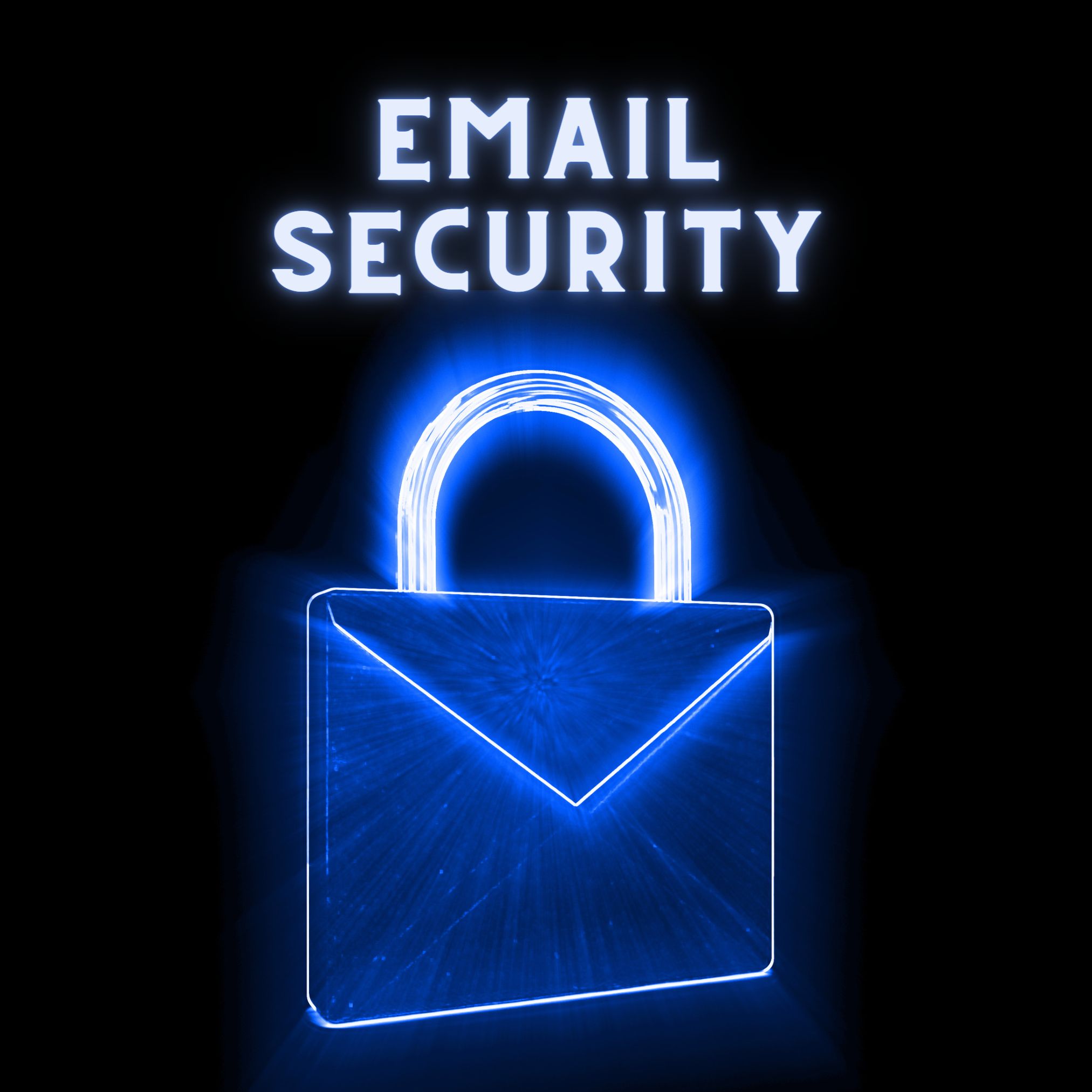Introduction:
In the digital age, email serves as a linchpin in our daily communication, seamlessly connecting individuals and organizations across the globe. As we harness the power of electronic mail for personal and professional exchanges, securing this conduit becomes increasingly paramount. This blog post is a comprehensive exploration of email security, delving into the nuances of challenges faced by users and unveiling robust solutions to fortify our digital communication channels.
Understanding:
To embark on a journey to enhance email security, a profound understanding of the multifaceted challenges is paramount. This understanding involves recognizing the intricate dynamics where human vulnerability intertwines with sophisticated cyber threats.
1. Phishing Dynamics:
Phishing, a pervasive threat in the digital landscape, preys on human trust and manipulates individuals into divulging sensitive information. Cybercriminals employ deceptive tactics that mimic trustworthy entities, making it imperative that users be cognizant of these red flags to thwart potential attacks.
2. Malware and Attachment Risks:
Emails, while efficient, often serve as unwitting carriers for malicious attachments, acting as a vector for malware intrusion. Understanding the risks associated with downloading attachments is crucial to maintaining the security of personal and organizational systems.
3. Authentication and Access Challenges:
Weak authentication mechanisms and compromised passwords create an entry point for unauthorized access to email accounts. Recognizing the significance of robust authentication practices is pivotal in mitigating the risk of unauthorized intrusion and safeguarding sensitive information.
4. Encryption as a Safeguard:
The vulnerability of email content during transmission necessitates the implementation of end-to-end encryption. Understanding the role of encryption technologies becomes paramount in safeguarding the confidentiality of sensitive information exchanged through email.
5. Human Element in Security:
Human error remains a significant factor in email security breaches. Acknowledging the role of user awareness, education, and training is fundamental in building a resilient defence against evolving cyber threats.
This understanding forms the foundation for addressing email users’ challenges and sets the stage for comprehensive solutions.
Describing the Problems Faced by Customers and Solutions:
1. Phishing Attacks:
Problem:
Firstly, phishing attacks persist as a prevalent email security threat, exploiting human trust through deceptive emails that mimic legitimate entities.
Solution:
Implement advanced email filtering and anti-phishing solutions capable of real-time analysis to identify and block potentially malicious messages. Educate users on recognizing phishing red flags and encourage scepticism towards unexpected or unsolicited emails.
2. Malware and Attachments:
Problem:
Email attachments often harbour malware, posing a risk to system integrity and data security when users unwittingly download and open them.
Solution:
Utilize robust antivirus and anti-malware software to scan email attachments regularly. Promote user awareness about the dangers of downloading attachments from unknown sources and encourage using secure file-sharing platforms for large or sensitive files.
3. Authentication and Access Challenges:
Problem:
Thirdly, weak passwords and inadequate authentication mechanisms expose email accounts to unauthorized access.
Solution:
Enforce multi-factor authentication (MFA) to add an extra layer of security. Educate users on creating strong, unique passwords and regularly updating them. Conduct regular security audits to identify and address authentication vulnerabilities.
4. Encryption as a Safeguard:
Problem:
Fourthly ,insufficient email encryption exposes transmitted content to potential interception, compromising the confidentiality of sensitive information.
Solution:
Implement end-to-end email encryption to secure communication during transmission. It is essential to use encryption technologies such as Transport Layer Security (TLS) to improve the security of communications.
5. Human Element in Security:
Problem:
Lack of user awareness and education contributes to email security breaches due to human error.
Solution:
Conduct regular security awareness training for employees, educating them about common email security threats and providing guidelines on recognizing and responding to suspicious emails. Encourage the development of a cybersecurity-aware culture within organizations.
Whenever arching email security strategy, these solutions contribute to a more resilient defence against evolving cyber threats.
Conclusion:
In conclusion, the dynamic digital communication landscape, security challenges require a proactive approach. On the other hand, our exploration has unveiled the intricate interplay between technological fortifications and user awareness, emphasizing the collective responsibility to safeguard our digital communication channels.
The prevalence of phishing attacks, the insidious nature of malware-laden attachments, and the persistence of authentication vulnerabilities underscore the need for continuous adaptation, continuous adaptation, and enhancement. Encryption emerges as a cornerstone, shielding our communications from prying eyes and bolstering the resilience of our information exchanges.
Recognizing and thwarting potential threats is paramount, and user education is crucial. Empowering individuals with the knowledge to discern phishing attempts, create robust passwords, and exercise caution with email attachments contributes significantly to overall security.
As we strive to fortify our digital communication channels, it is crucial to view email security as a collective responsibility. Organizations, individuals, and technology providers must collaboratively contribute to the ongoing effort to stay one step ahead of cyber threats. By embracing a comprehensive strategy that combines technological solutions with user education, we pave the way for a more secure and resilient email ecosystem.
In the face of evolving cyber threats, our understanding, solutions, and proactive measures serve as a foundation for building a digital communication environment that is not only efficient but together, let us embark on a journey towards a future where our emails traverse the digital realm with confidence, protected against the ever-present tide of cyber challenges.
Suggestions:
1. Enable Two-Factor Authentication (2FA):
Firstly, activate two-factor authentication to add an extra layer of security to your email accounts. This additional verification, such as a code sent to your mobile device, enhances the overall safety of your email.
2. Be Sceptical of Unexpected Emails:
Exercise caution when receiving unexpected or unsolicited emails. Avoid clicking links or downloading attachments from unknown senders, and verify the sender’s legitimacy before taking action.
3. Regularly Update Passwords:
Thirdly, change your email passwords regularly and use a combination of uppercase and lowercase letters, numbers, and special characters. Avoid easily guessable information and refrain from password reuse across multiple platforms.
4. Educate Yourself on Phishing Red Flags:
Familiarize yourself with common phishing red flags, such as generic greetings and urgent requests for personal information. Authenticate the legitimacy of emails before responding or taking any action.
5. Use Secure Wi-Fi Connections:
Avoid accessing your email accounts over unsecured or public Wi-Fi networks. Use virtual private networks (VPNs) for added security when accessing email from public places.
6. Regularly Check and Update Security Settings:
However, review and update the security settings of your email accounts regularly, including privacy settings and notification preferences. Ensure that your chosen settings contribute to the overall security of your email.
7. Keep Software and Antivirus Updated:
Ensure that your email client, antivirus software, and operating system are up-to-date with the latest security patches. Regular updates help protect against known vulnerabilities that cyber attackers may exploit.
8. Report Suspicious Emails:
If you receive an email that appears to be a phishing attempt or a scam, report it to your email provider. Many email services have mechanisms for reporting and blocking malicious emails, contributing to the collective effort to improve email security.
9. Avoid Emailing Sensitive Information:
Refrain from sending sensitive information via email, such as passwords or financial details. Use secure and encrypted channels or consider alternative communication methods for confidential exchanges.
10. Backup Important Emails:
Finally, regularly backup vital emails to prevent data loss in case of accidental deletion, a security incident, or system failure. Consider using a secure cloud storage solution or an external hard drive for backups.
By incorporating your email practices, you can enhance your email security and reduce the likelihood of falling victim to common cyber threats.
Visit our website to know more!
Follow us on LinkedIn:


